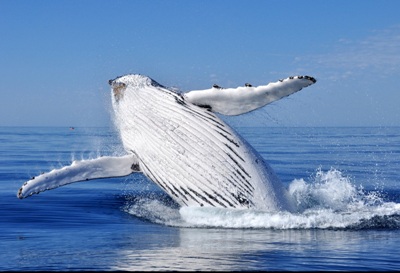Rosneft Contributes in Research and Conservation of Cetaceans

On July 23, Rosneft celebrates World Whale and Dolphin Day aimed to attract the public’s attention to the problems of marine mammals’ conservation.
Environment protection is one of the key priorities for Rosneft Oil Company in its operations. The Company implements a number of initiatives designed to preserve and restore natural resources, as well as to study marine mammals, which are the most important bioindicators of the state of the environmental.
Since 2018, Rosneft has been implementing a comprehensive project to study Black Sea dolphins in cooperation with the Shirshov Institute of Oceanology of the Russian Academy of Sciences. Full-fledged studies of the dolphins’ habitat have not been conducted since the 1980s. The implementation of the project to study and monitor marine mammals of the Black Sea is part of Rosneft’s large-scale environmental programme. Currently, two full-scale maritime expeditions have been organized along the entire coast of the Krasnodar Territory, each with a length of about 1,000 km, as well as airborne registration on a 700 km route along the Black Sea from Anapa to Adler. Mammals were studied both in the coastal 12-mile zone and in the open sea, at a distance of up to 110 km from the shore.
 Scientists registered over 2,000 individuals of dolphins and collected extensive scientific material to compile photo catalogues of the Black Sea cetaceans in the area. The conducted research will contribute to the creation of a catalogue of Black Sea dolphin populations, which will be a tool for assessing the current state of cetaceans of the Black Sea.
Scientists registered over 2,000 individuals of dolphins and collected extensive scientific material to compile photo catalogues of the Black Sea cetaceans in the area. The conducted research will contribute to the creation of a catalogue of Black Sea dolphin populations, which will be a tool for assessing the current state of cetaceans of the Black Sea.
On the northeast shelf of Sakhalin Island, Rosneft has been involved in the conservation of the Korean-Okhotsk grey whale population since 2002 as part of the Sakhalin-1 project. Over the years, knowledge about this population, previously thought to be almost extinct, has been greatly enhanced. Unique information was obtained on whale behaviour, their feeding base, number, sex and age structure, reproduction and distribution in Sakhalin waters. The whales’ migration routes through the Pacific Ocean and their wintering grounds off the coast of Mexico have been discovered, and a photo-ID catalogue has been created in which each individual is given a number and some are even named.
Note for Editors:
The environmental activities of Rosneft Oil Company take on an interdisciplinary approach and comprehensive research by representatives of various branches of science—oceanology, geology, marine biology—as well as study the animal species being indicators of the state of the ecosystem.
In the Arctic region, the Company as the largest resource user on the Russian shelf conducts studies of polar bears in areas of prospective development of hydrocarbon deposits during the annual research expeditions Kara-Winter and Kara-Summer. The polar bear is one of the key indicators of the sustainability of the Arctic ecosystem.
In addition, during its Arctic expeditions, Rosneft conducts an associated observation of marine mammals and birds of the northern seas.
The Company supports programmes to study and preserve populations of the Amur tiger, the wild reindeer in Evenkia, the Siberian sable, red-listed species of goose and seagull, and the Atlantic subspecies of walrus.
Rosneft
Information
Division
July 22,2020